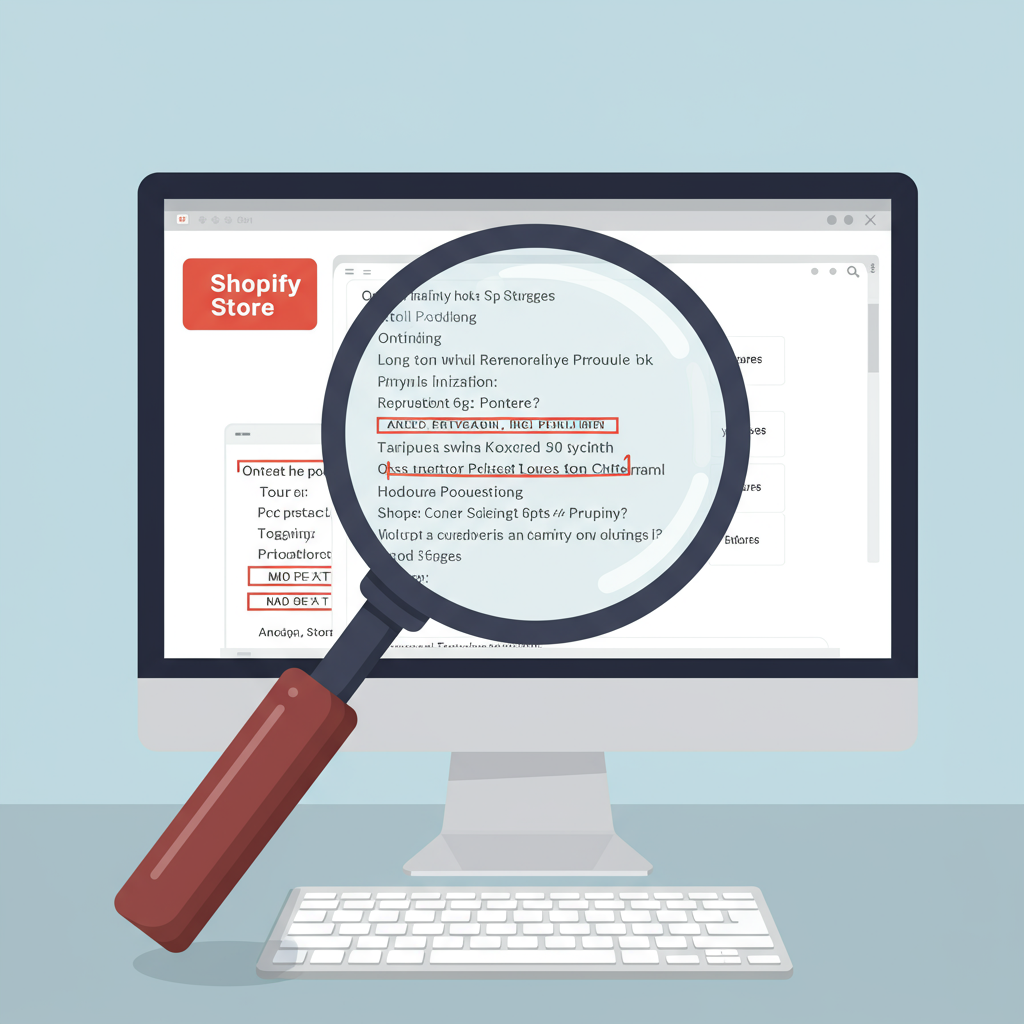Discover how leveraging specific, niche search terms can dramatically boost your store’s visibility and conversions.
As a Shopify merchant, I know firsthand the challenges of standing out in a crowded online marketplace. We all strive for more traffic, but not just any traffic – we want visitors who are ready to buy.
This is where the magic of long-tail keywords comes into play. Forget the highly competitive, generic terms; we’re diving deep into the specific phrases that truly connect with buyer intent.
So, what exactly are long-tail keywords? Simply put, they are longer, more specific keyword phrases, typically three or more words in length. Think ‘women’s running shoes’ (short-tail) versus ‘lightweight women’s trail running shoes size 7’ (long-tail).
The beauty of these longer phrases is that they indicate a much clearer intent from the searcher. Someone typing ‘lightweight women’s trail running shoes size 7’ knows exactly what they’re looking for.
For us, this translates directly into higher conversion rates. When your product page perfectly matches a specific long-tail query, the likelihood of a sale skyrockets.
Another significant advantage for Shopify stores is the reduced competition. While thousands of stores might vie for ‘running shoes,’ far fewer are optimized for ‘eco-friendly men’s waterproof hiking boots for wide feet.’
This lower competition means it’s much easier for our Shopify store to rank higher in search results for these specific terms, driving targeted traffic directly to our products.
Now, you might be wondering, ‘How do I find these elusive long-tail keywords?’ It’s simpler than you think, and I’ll walk you through some effective strategies.
First, start with brainstorming. Think like your customer. What specific problems are they trying to solve? What unique features do they look for? Consider product variations, colors, sizes, and materials.
Next, leverage Google itself. When you start typing a query into the Google search bar, pay attention to the autocomplete suggestions. These are often popular long-tail variations.
Scroll to the bottom of Google’s search results page, and you’ll find the ‘Related searches’ section. This is a goldmine for discovering terms people are actively using.
If you have Google Search Console set up for your Shopify store (and you absolutely should!), dive into the ‘Performance’ report. Look at the queries people are already using to find your site.
You’ll often uncover unexpected long-tail keywords that are already bringing you traffic. Optimize your existing content around these terms to boost their performance.
Don’t forget about your competitors. Analyze their product descriptions, blog posts, and even their meta descriptions. What specific phrases are they targeting?
While paid tools like Ahrefs or SEMrush offer powerful keyword research capabilities, free tools like Google Keyword Planner (with a Google Ads account) or Ubersuggest can also provide valuable insights.
Another fantastic source is customer reviews and FAQs. Pay close attention to the language your customers use when describing your products or asking questions. This is authentic, buyer-centric language.
Online forums, Reddit, and social media groups related to your niche are also excellent places to listen. What questions are people asking? What specific terms do they use when discussing products like yours?
Once you’ve compiled a list of relevant long-tail keywords, the next crucial step is to strategically implement them across your Shopify store. This isn’t about keyword stuffing; it’s about natural integration.
Start with your product titles. Instead of just ‘Blue Dress,’ consider ‘Women’s Navy Blue Floral Maxi Dress for Summer.’ Be descriptive and include key attributes.
Your product descriptions are prime real estate. Naturally weave in your long-tail keywords throughout the text, focusing on benefits and specific features that align with those keywords.
Don’t overlook your meta titles and descriptions. These are what appear in search results. Craft compelling, keyword-rich meta descriptions that entice clicks.
Image alt text is often forgotten but vital for SEO. Describe your images using long-tail keywords where appropriate. For example, ‘Alt text: Close-up of lightweight women’s trail running shoes size 7 with breathable mesh.’
Blog posts are incredibly powerful for targeting long-tail keywords. Use them to answer specific questions your customers might have, creating valuable content that ranks.
Optimize your collection pages and URL slugs as well. A collection page titled ‘Organic Cotton Baby Clothes’ is more effective than just ‘Baby Clothes.’
Remember, the goal is always to provide value to the user. Google prioritizes content that genuinely answers a search query. Focus on natural language and user experience.
Regularly monitor your performance using Google Analytics and Shopify’s built-in reports. See which long-tail keywords are driving traffic and conversions, and adjust your strategy accordingly.
By consistently applying these strategies, you’ll notice a significant increase in highly qualified organic traffic to your Shopify store, leading to more sales and a stronger online presence.
What do you think about this approach to long-tail keywords for Shopify? I’d love to hear your thoughts!
Embracing long-tail keywords is not just an SEO tactic; it’s a fundamental shift towards understanding and serving your customers’ precise needs. It’s about being found by the right people, at the right time.
So, take action today. Start researching, start optimizing, and watch your Shopify store thrive with the power of long-tail keywords.






